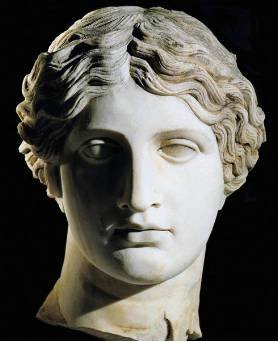Pompeii
dal 1/3/2008 al 21/6/2008
Segnalato da
1/3/2008
Pompeii
Museum of Fine Arts MFAH, Houston
Tales from an Eruption. On August 24, 79 A.D. Vesuvius, erupted with pyroclastic fury, burying the city of Pompeii in a mountain of hardened ash. The exhibition reveals the ancient world through painting, sculpture, and craft. It helps us connect with the victims whose hopes and fears were not so unlike ours today.

Pompeii: Tales from an Eruption reveals the ancient world through painting, sculpture, and craft. It helps us connect with the victims whose hopes and fears were not so unlike ours today. These works of art will give viewers insight and appreciation into the worlds of the artists who made them and the owners who cherished them.
On August 24, 79 A.D. the world´s most famous volcano, Vesuvius, erupted with pyroclastic fury, burying the city of Pompeii in a mountain of hardened ash. In the only eye witness account, the Roman Historian Pliny the Younger, described the event:
A fearful black cloud was rent by forked and quivering bursts of flame, and parted to reveal great tongues of fire. You could hear the shrieks of women, the wailing of infants, and the shouting of men… Many besought the aid of the gods, but still more imagined there were no gods left and that the universe was plunged into eternal darkness.
Fortunately for us, the darkness proved not to be eternal. In the late 1500s workers digging a canal uncovered slabs of marble and painted fresco walls. In the 1600s more ruins were unearthed. In 1763 an inscription was found that identified the town as the Pompeii written about by Pliny. The eruption of Mt. Vesuvius preserved an unprecedented number of works of art and objects from daily life, as well as remains of about two thousand residents who had not fled at the first signs of trouble.
For many of Pompeii´s citizens life itself had been a form of art. They wore exquisite jewelry fashioned from gold and precious stones. The walls of the homes of the wealthy were painted with Classical themes and their owners walked on mosaics made from tiny pieces of stone and glass.
Statues of gods and goddesses adorned Pompeii´s gardens and courtyards and residents dined on decorated fine silver. For Romans, bathing was a social occasion. The large public baths featured saunas, hot tubs, cold water plunges, and a gymnasium. Massages and perfumed body wraps were popular. Lunch was served. The theater and gladiatorial contests were popular forms of public entertainment. Gladiators were seen as men of courage and often held in high regard. Some even had fan clubs. Gladiators were usually slaves or prisoners trained in combat school to perform special roles using various types of arms. If they fought well, there were sometimes awarded their freedom.
The exhibition consists of 500 objects, generally excavated in the last decade, from three famous and wealthy sites. They include marble statues, wall frescoes, gold jewelry, silver dinner service and household items, bronze household items, coins, and body casts and skeletons of inhabitants who were unable to escape.
Museum of Fine Arts
1001 Bissonnet Street - Houston



